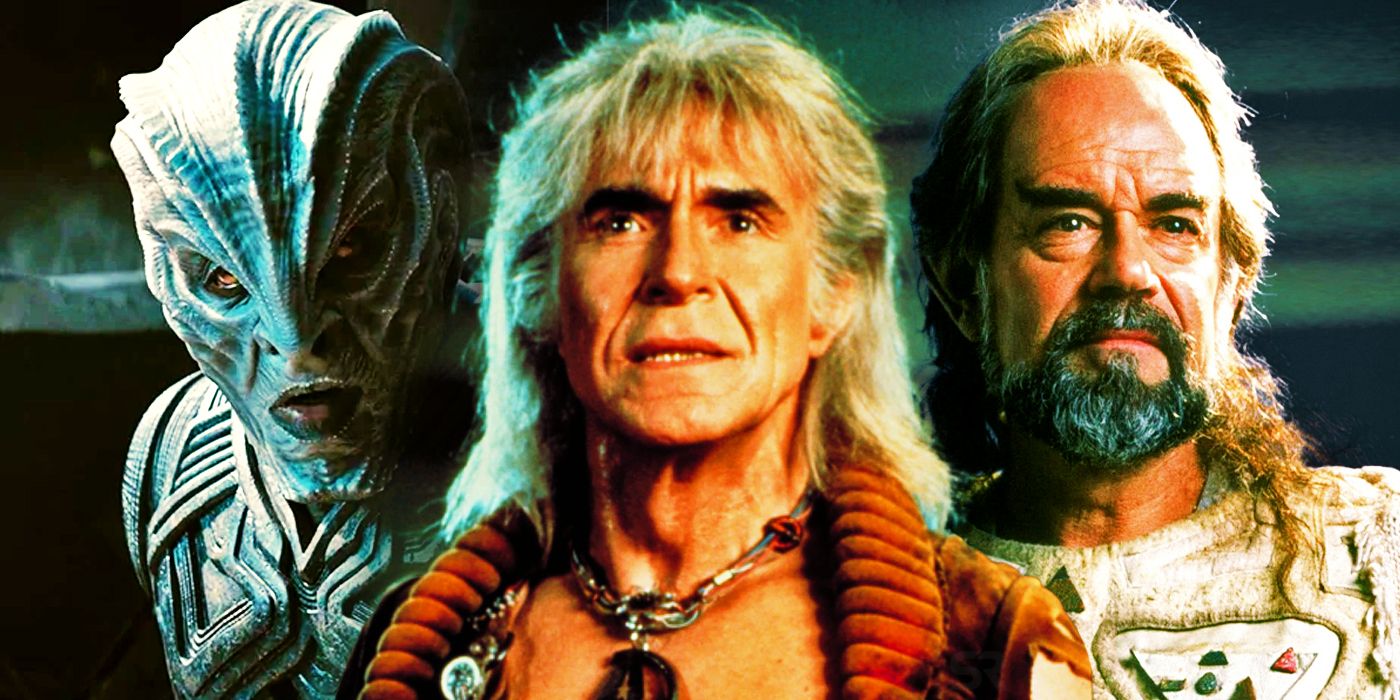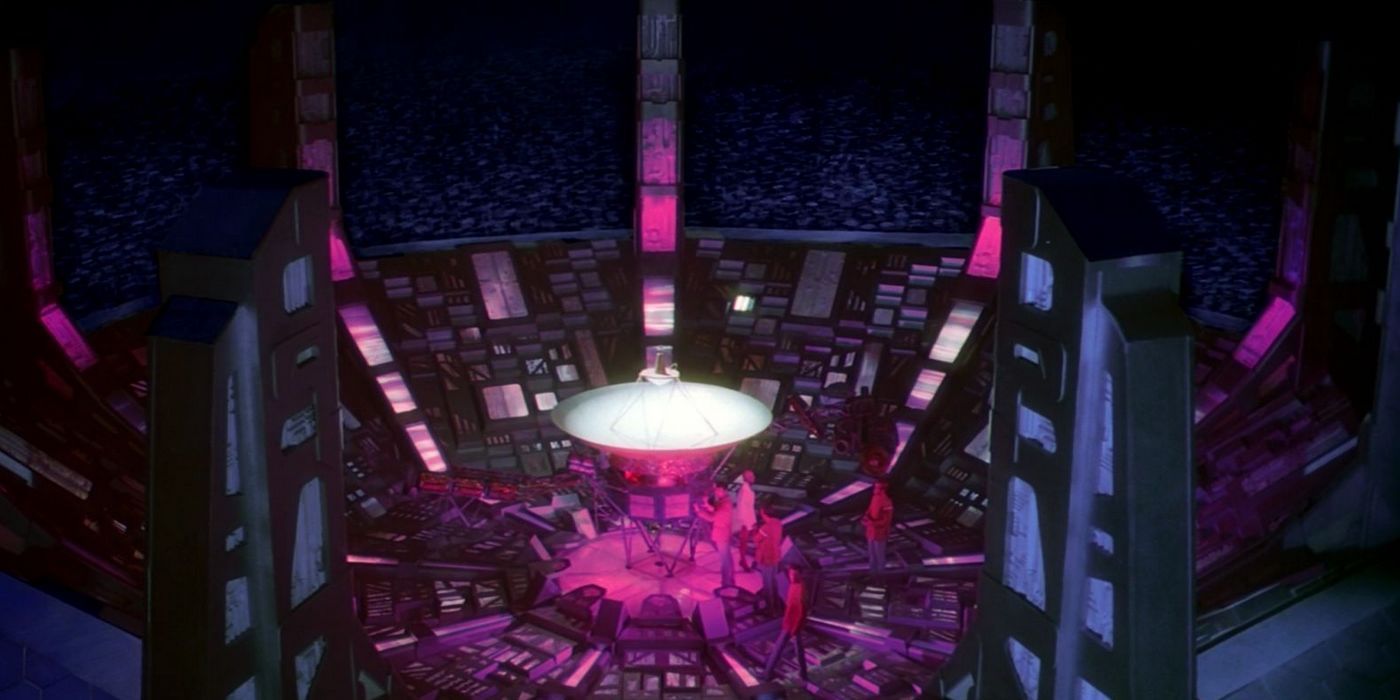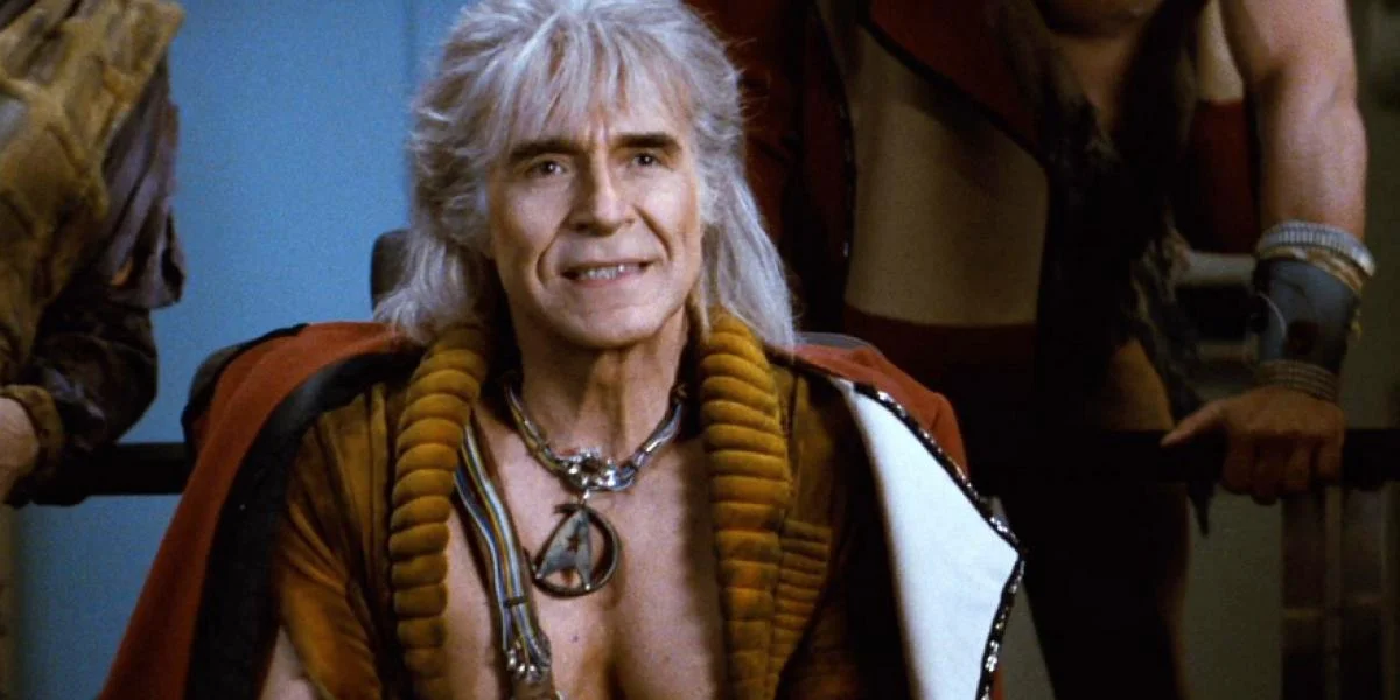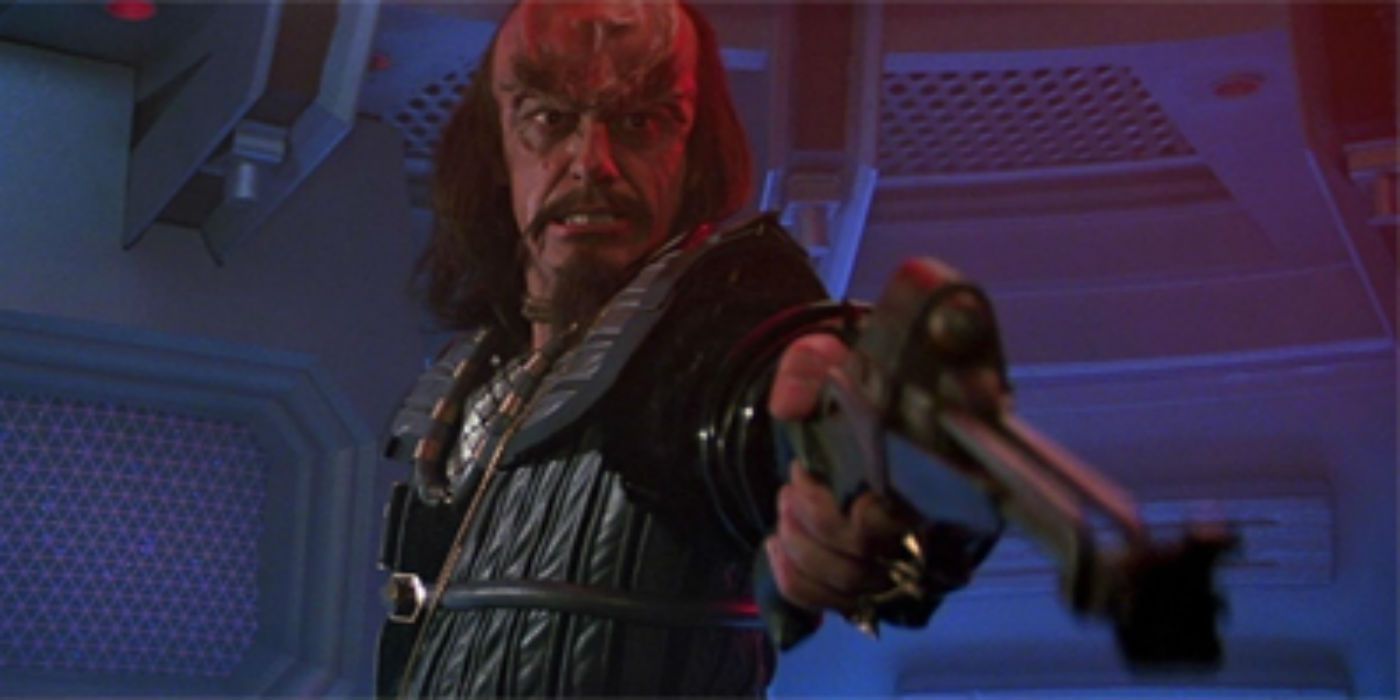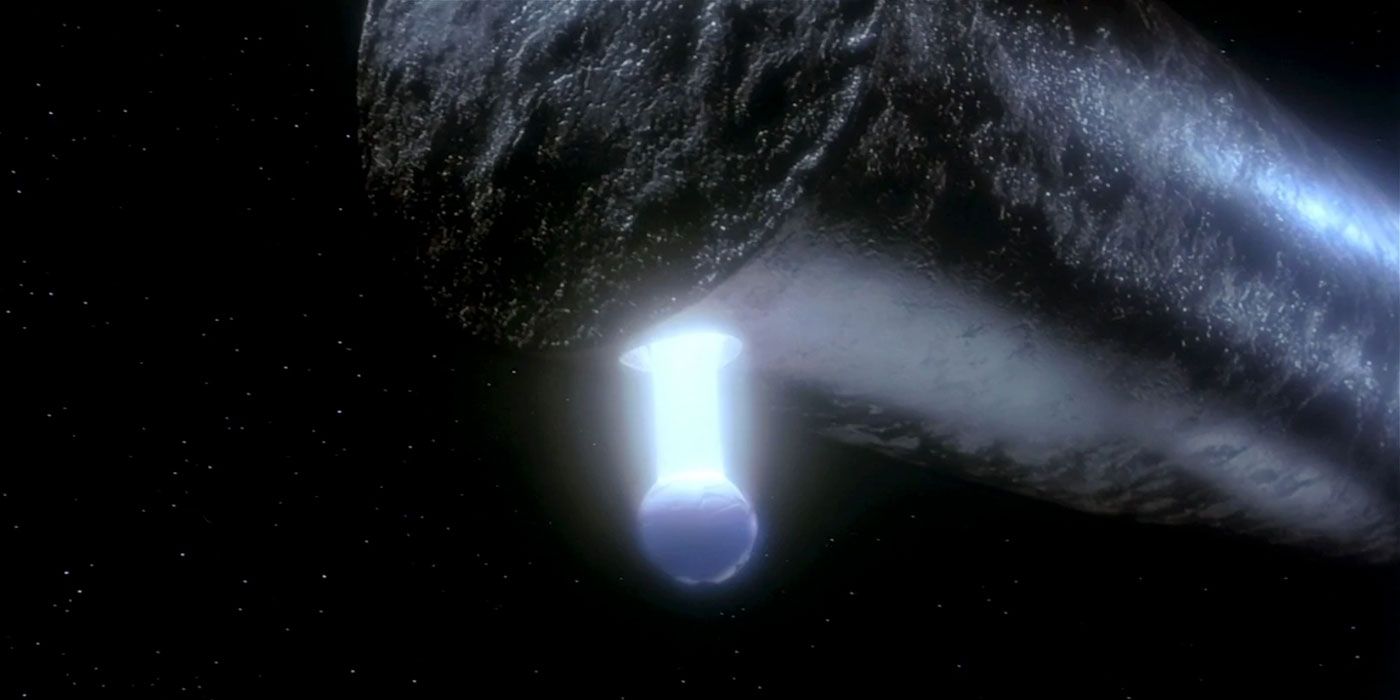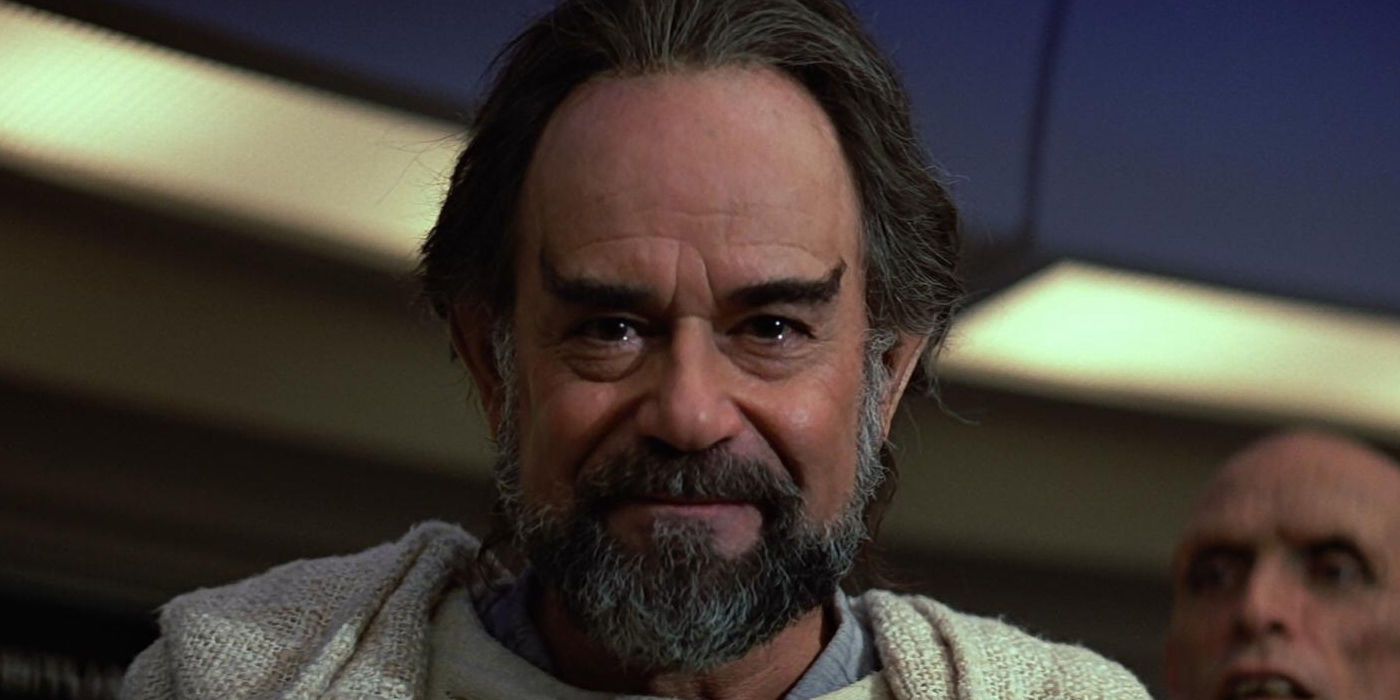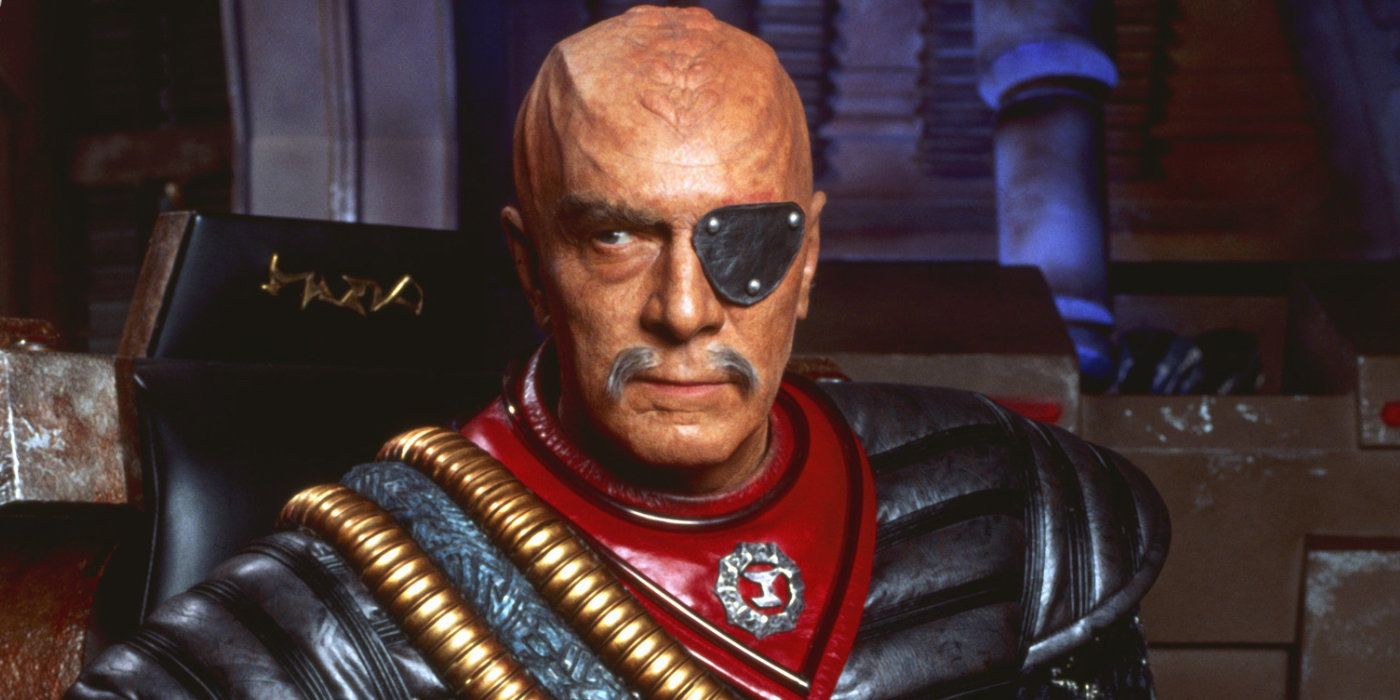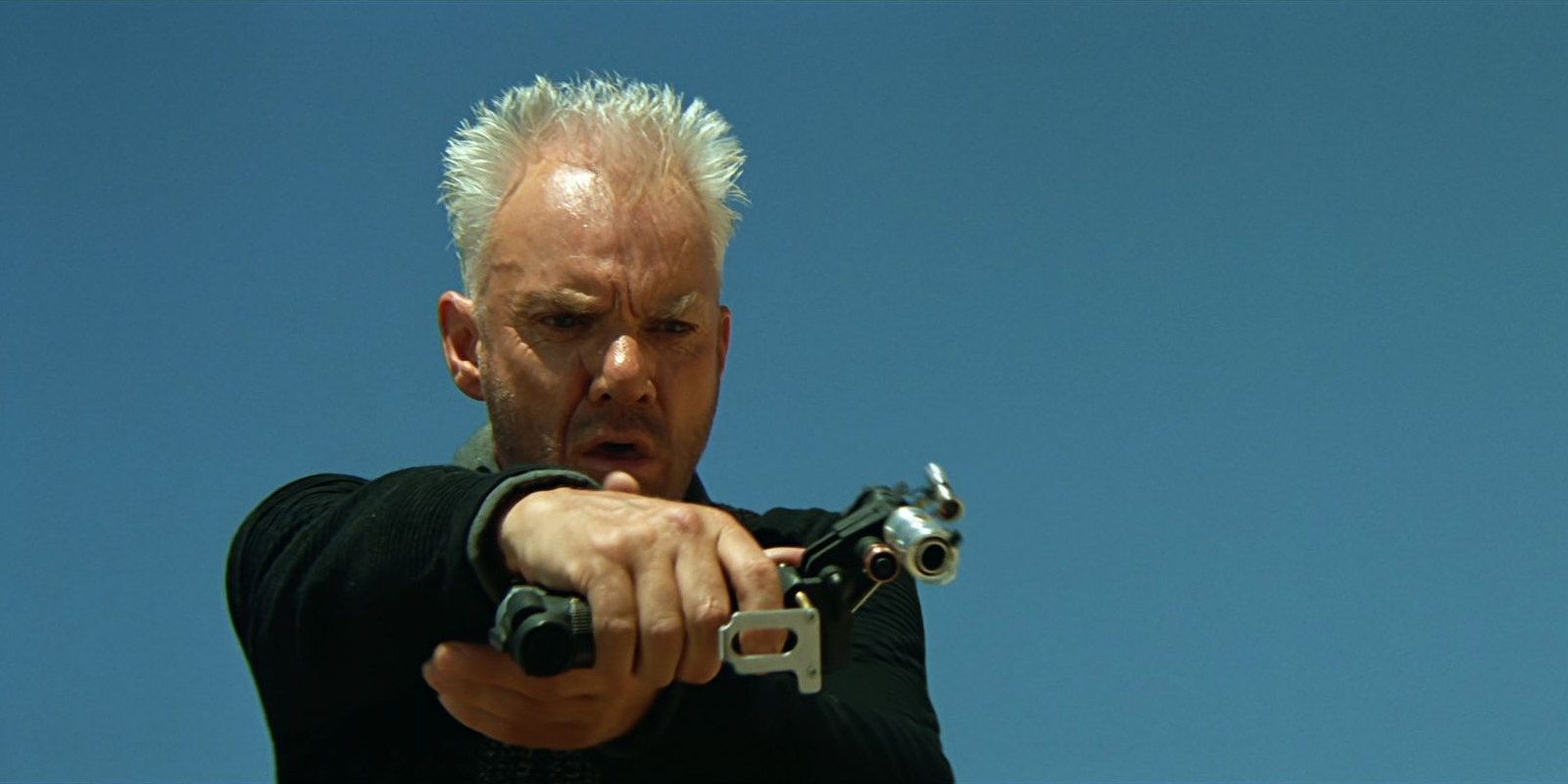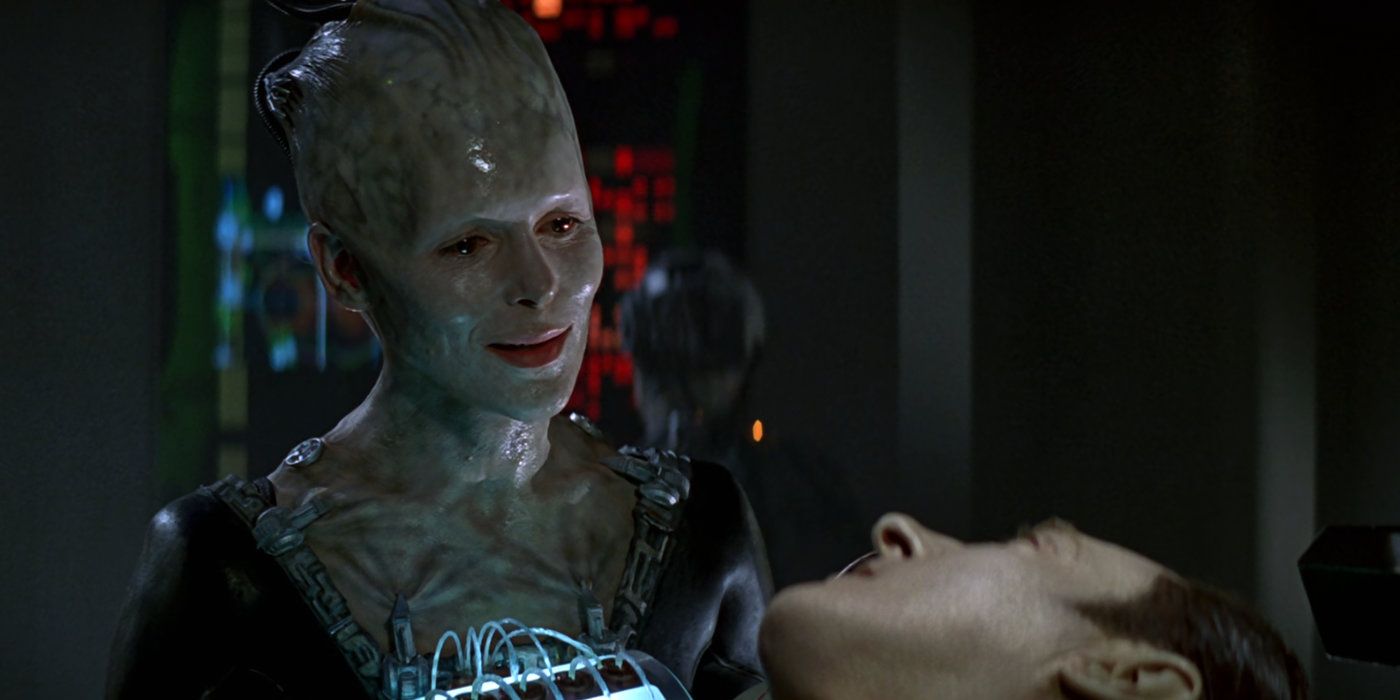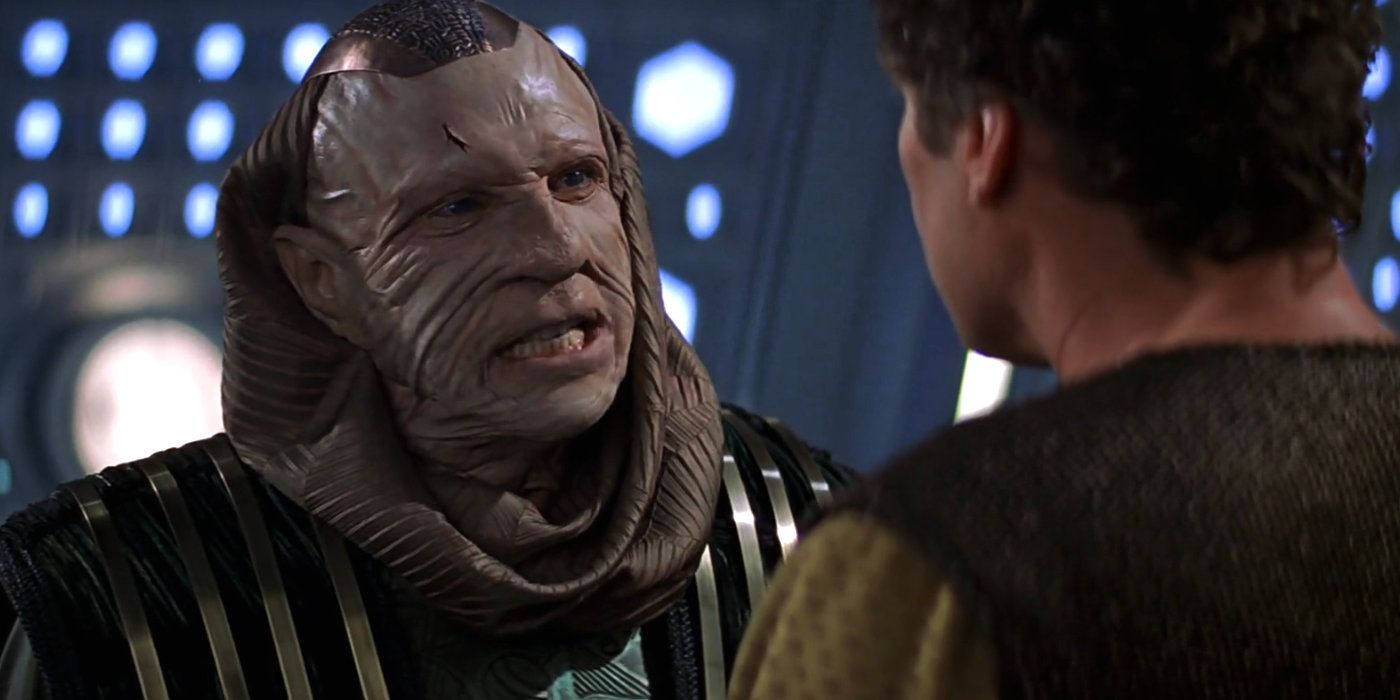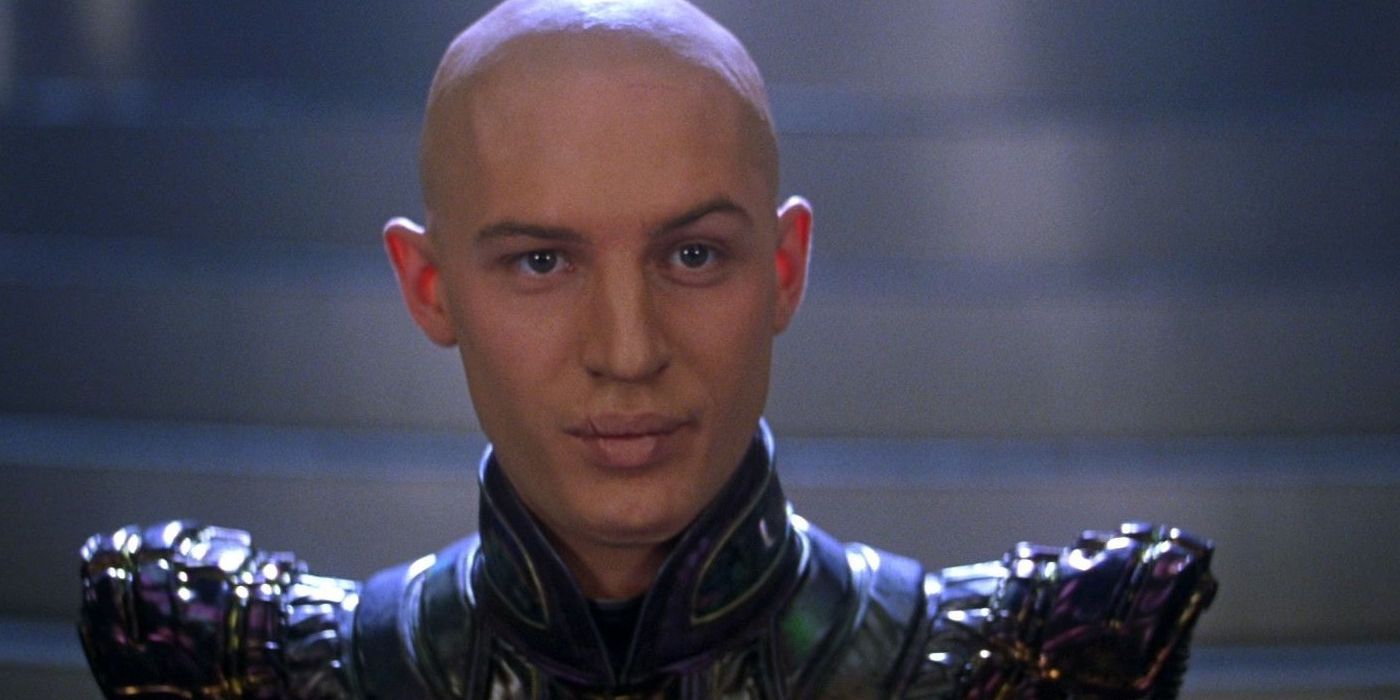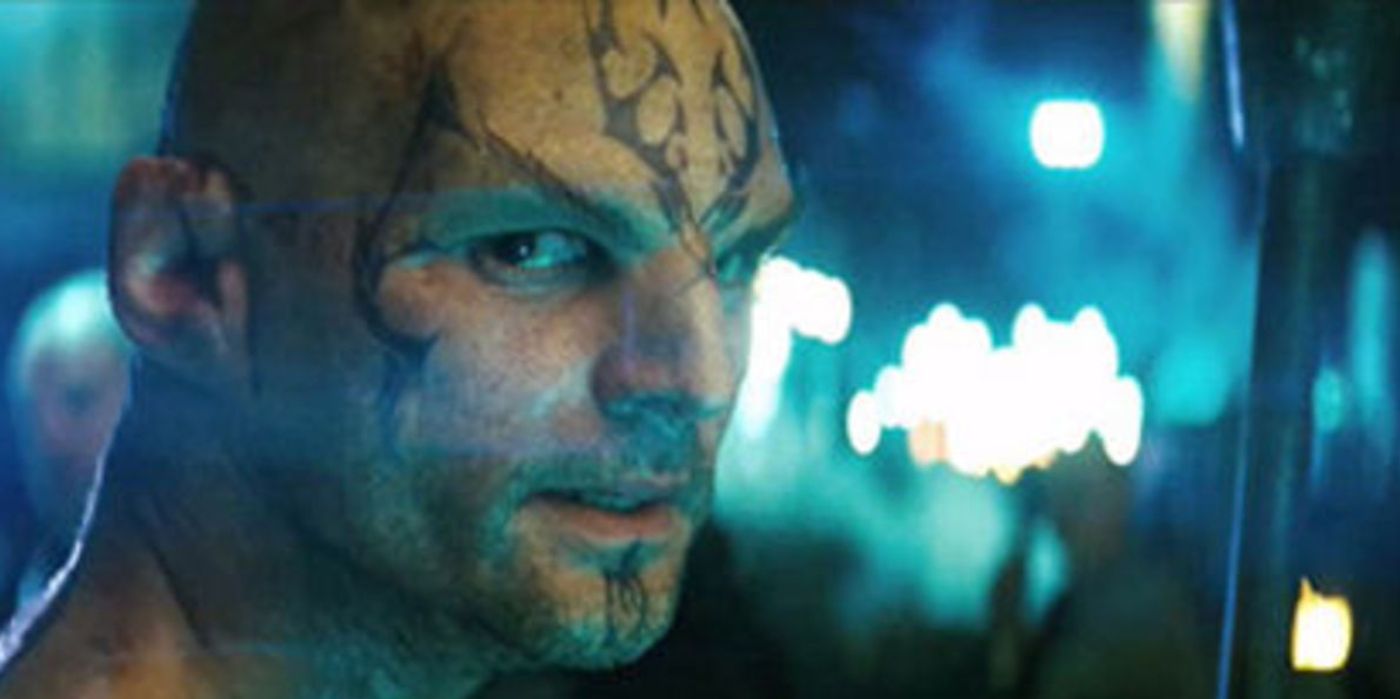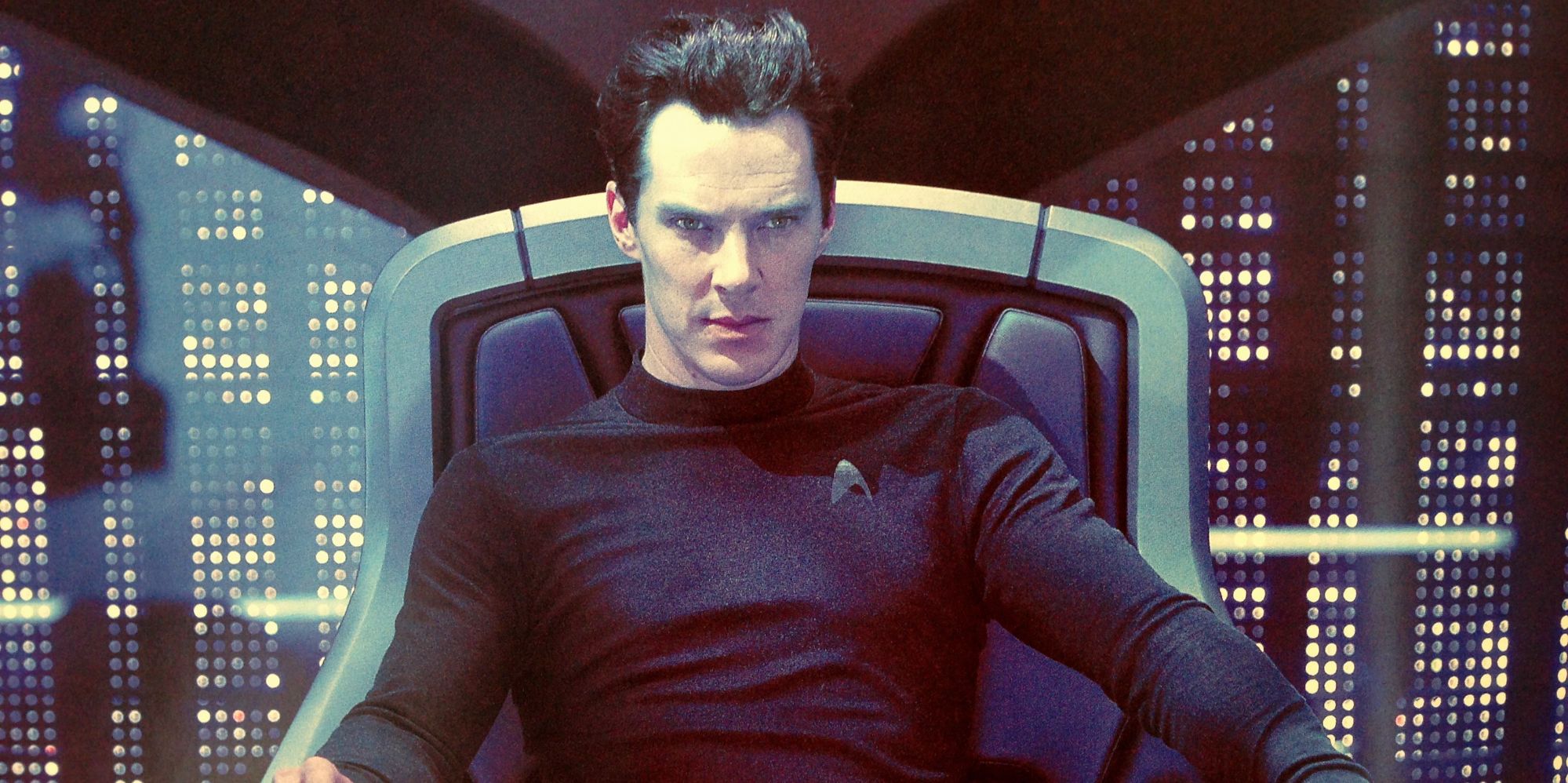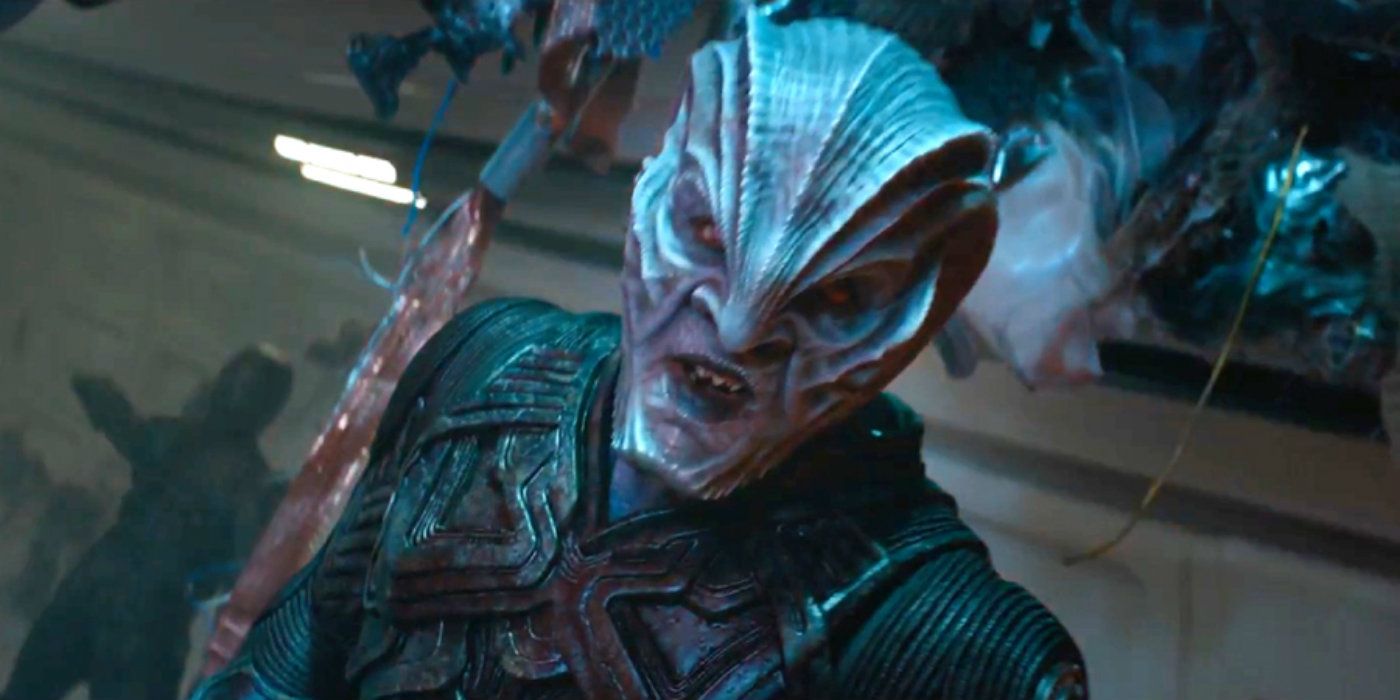The Star Trek movie franchise has featured a plethora of compelling, engaging villains over 13 films, featuring everything from conspiracy-minded Klingons to time-displaced augmented supermen. More than most franchises, Star Trek is defined by its heroes, the Starfleet crews who boldly go where no one has gone before. Many of the best Star Trek stories on the small screen don't even feature a traditional antagonist, instead focusing on the conflicts and contradictions inherent in even the best people striving for empathy and understanding.
The Star Trek movies have taken a more traditional narrative path, however, almost always featuring a clear-cut bad guy that Admiral James T. Kirk (William Shatner) or Captain Jean-Luc Picard (Patrick Stewart) must overcome to save millions of innocent lives. For a film franchise that currently has 13 entries, the success rate of the portrayal of the big screen villains is impressively high. Even in some of the lesser Star Trek movies, the villains tend to be at least watchable and interesting with a somewhat understandable point of view.
13 V'ger - Star Trek: The Motion Picture
The first big-screen Star Trek villain is one of the most mysterious and complicated. In Star Trek: The Motion Picture, Admiral Kirk and the Enterprise are called back into action to investigate a massive cloud of energy that is absorbing everything in its path and is on a collision course with Earth. At the heart of that cloud was V'ger, formerly the Voyager 6 probe sent into space by Earth centuries earlier. The probe fell through a black hole and emerged on a planet of living machines, where it rapidly evolved and gained sentience.
V'ger was on a course for Earth because it was desperate to meet its creator. Commander Will Decker (Stephen Collins) merged with V'ger, and the being evolved to a higher plane of existence. V'ger brought up questions about the nature of artificial life that the franchise would continue to touch upon in the years to come through Lieutenant Commander Data (Brent Spiner), the Borg, and Soji (Isa Briones) in Star Trek: Picard.
12 Khan - Star Trek II: The Wrath Of Khan
Introduced in the Star Trek: The Original Series episode "Space Seed," Khan (Ricardo Montalbán) was a genetically augmented tyrant from the late 20th century who once conquered much of Earth. He and his followers were awakened by the Enterprise crew, and Khan quickly attempted to commandeer the ship. When his plot failed, Kirk marooned Khan and his followers on the uninhabited planet Ceti Alpha V. Khan and his followers escaped the desolate planet 15 years later, bent on revenge against Kirk.
Khan is, in many ways, the quintessential Star Trek villain. Montalbán's gonzo energy in the role paired perfectly with Shatner's famously hammy Kirk, and the tension in their cat-and-mouse space battles resulted in some of the most satisfying action sequences in all of Star Trek. Often imitated but rarely equaled, Khan remains the greatest of Star Trek villains.
11 Kruge - Star Trek III: The Search For Spock
The Klingon mercenary Kruge (Christopher Lloyd) looked to exploit the power of the Genesis Device, the dangerous terraforming technology introduced in The Wrath Of Khan. A ruthless warlord, Kruge would let nothing get in his way, even murdering Kirk's son David. He was eventually outsmarted and outfought by Kirk, meeting his end on the Genesis planet.
While the Klingons had been around since TOS and made a brief appearance in The Motion Picture, Kruge was a crucial evolution of the warrior race. The leather and chain-heavy apparel, the guttural language, and the unique system of honor and death all took root in Kruge. With the exception of Star Trek: The Next Generation's Worf (Michael Dorn), there may be no more pivotal Klingon character.
10 The Whale Probe - Star Trek IV: The Voyage Home
Star Trek IV: The Voyage Home is a decidedly lighter affair than the previous films. A mysterious probe begins disabling infrastructure on Earth, causing massive storms as it probes Earth's oceans. Kirk and Spock are eventually able to determine the probe is attempting to make contact with humpback whales, which by the 23rd century were long extinct. The crew time travels to the late 20th century in their stolen Klingon Bird Of Prey to obtain a pair of whales.
The Voyage Home is one of the most beloved entries in the Star Trek franchise exactly because of its breezy, funny take on the final frontier. Director Leonard Nimoy notably wanted to make a Star Trek film where no one died and violence was at a minimum. He succeeded, and then some. The whale probe is an obvious throwback to the sort of Star Trek television episodes where there are no bad guys, just people trying to understand each other in good faith.
9 Sybok - Star Trek V: The Final Frontier
Sybok (Laurence Luckinbill) was Spock's half-brother who rejected the traditional Vulcan teachings in order to embrace emotion. He possessed telepathic abilities he used to recruit followers to his cause, as he sought the God of Sha Ka Ree. Spock (Leonard Nimoy) harbored deeply conflicted feelings about his rebellious brother, who he never mentioned before the events of Star Trek V: The Final Frontier.
While Star Trek V was something of a disaster, that had little to do with Sybok. Luckinbill gives a compelling performance, and the character's dynamic with Spock is memorable and affecting. Star Trek: Strange New Worlds is poised to explore a younger version of Sybok, who was briefly seen in episode 7, "The Serene Squall."
8 General Chang - Star Trek VI: The Undiscovered Country
General Chang (Christopher Plummer) was a Klingon official who was resistant to the peace being negotiated between the Federation and the Klingon Empire. With the assistance of high-ranking Starfleet personnel, he initiated a conspiracy to frame Kirk for the murder of the Klingon Chancellor Gorkon (David Warner), which he believed would thwart the peace talks. He was also, weirdly, a very big fan of Shakespeare.
Chang was the last gasp for the traditional villainous TOS Klingon archetype, as they had become Federation allies by the time of Star Trek: The Next Generation. Plummer imbues Chang with a vicious charisma as he belts Shakespeare quotes while firing photon torpedoes. It looks to be a family tradition, as Plummer's daughter Amanda is set to play the villain Vadic in Star Trek: Picard season 3.
7 Dr. Tolian Soran - Star Trek Generations
The first Star Trek film to primarily feature the cast of TNG saw Captain Picard square off against Dr. Tolian Soran (Malcolm McDowell), who was an El-Aurian refugee like the Enterprise-D's bartender, Guinan (Whoopi Goldberg). Soran was obsessed with getting back to the Nexus, an energy ribbon that served as a gateway to a paradise dimension. He was willing to kill untold millions to get back to his own version of heaven.
Soran himself was not an especially compelling villain, though McDowell does what he can with the role. That said, Soran initiates a couple of momentous events in Star Trek canon, as he gives the villainous Klingon Duras sisters the means to destroy the USS Enterprise-D, and he indirectly brings about the death of a time-displaced Captain Kirk. It's an impressively destructive run for the villain.
6 The Borg Queen - Star Trek: First Contact
The Borg were the signature villains during Star Trek: The Next Generation's seven-year run, so it was no surprise when they became the primary antagonists of the second TNG film, Star Trek: First Contact. What was surprising was the introduction of the Borg Queen (Alice Krige). The Borg had always been portrayed as a faceless collective with no individuals, but First Contact established the Queen as something akin to a leader of an insect hive.
The introduction of the Borg Queen would radically alter how the cyborg zombie race would be portrayed in other Star Trek projects. Star Trek: Voyager would see Captain Kathryn Janeway (Kate Mulgrew) and former Borg drone Seven of Nine (Jeri Ryan) face off with the Borg Queen on multiple occasions. The Borg Queen has returned multiple times with different actresses portraying the role, including Annie Wersching and Allison Pill in Star Trek: Picard.
5 Ru'afo & Admiral Dougherty - Star Trek Insurrection
The Son'a leader Ru'afo (F. Murray Abraham) conspired with Starfleet Vice Admiral Dougherty (Anthony Zerbe) to remove the Ba'ku colonists from the Briar Patch, a region of space with healing and restorative powers, which was essentially a fountain of youth. Unknown to Dougherty, who was mostly operating in good faith to mitigate the fallout from the Dominion War, Ru'afo had an ulterior motive, as the Son'a and Ba'ku were once the same people. Picard disobeyed Dougherty's orders to protect the Ba'ku colonists.
Dougherty is one in a long line of Starfleet admirals who are either morally compromised or simply manipulated by smarter, nefarious entities. Ru'afo is a bit of a one-note villain, largely remembered for his grotesquely stretched skin from plastic surgery to keep him young. The Son'a are one of the bigger misfires in the pantheon of Star Trek villains, despite a solid performance by Abraham as Ru'afo.
4 Shinzon - Star Trek: Nemesis
One of the most controversial villains in all of Star Trek, Shinzon (Tom Hardy) is a young clone of Jean-Luc Picard who allies himself with the slave race the Remans to overthrow the Romulan government. Having lived most of his life in a Reman slave mine, Shinzon is a dark reflection of Picard, leading the captain to question what his life could have been under different circumstances. A dying Shinzon ultimately sets his sights on wiping out both Captain Picard and Earth.
The failure of Shinzon to be a compelling villain is one of the main reasons Star Trek: Nemesis was a critical and box office disaster. While Tom Hardy's talent was plenty evident, Nemesis borrows too much from other, better Star Trek stories, making Shinzon seem like a pale imitation of Khan at times. Any empathy for the character is wiped away by his psychic assaults on Counselor Deanna Troi (Marina Sirtis) and his late story turn toward cartoonish villainy.
3 Nero - Star Trek 2009
Star Trek 2009, the J.J. Abrams-directed alternate timeline reboot, honors what came before. In an effort to save a large portion of the galaxy from a supernova, Leonard Nimoy's Ambassador Spock and a Romulan mining ship are pulled from the late 24th century to the mid-23rd century, on the day of Jim Kirk's (Chris Pine) birth. This event creates a new Star Trek reality known as the Kelvin timeline. Mourning the destruction of Romulus in the 24th century, the mining ship's Romulan commander Nero (Eric Bana) seeks vengeance against both the old and young versions of Spock in the 23rd century.
Nero could have very easily been a forgettable, minor villain, but Bana imbues him with such a strange, seething personality that he's incredibly memorable. His initial conversation with Captain Christopher Pike (Bruce Greenwood) is one of the movie's weirder, funnier moments. Nero does the unthinkable and destroys the planet Vulcan in Star Trek 2009, but defeating the villain ultimately cements the bond between Kirk and Spock and seals their shared destiny.
2 Khan & Admiral Marcus - Star Trek Into Darkness
In Star Trek Into Darkness' Kelvin timeline, Khan (Benedict Cumberbatch) and his followers are not found by the Enterprise, but by a vessel under the purview of Section 31, the shadowy black ops Starfleet organization. Admiral Marcus (Peter Weller) held Khan's followers hostage in suspended animation and made the 20th century superman do Section 31's bidding. Khan would manipulate Kirk and the Enterprise crew to get his revenge against Marcus.
Cumberbatch's version of Khan is right up there with Shinzon as one of the Star Trek franchise's most controversial villains. It's a compelling performance, but Cumberbatch's Khan is wildly different from Montalban's, lacking much of the original's theatrical charisma. It's also an unfortunate case of casting a white man to play a role originated by a man of Spanish descent.
1 Krall - Star Trek Beyond
Star Trek Beyond's villain was once known as Captain Balthazar M. Edison, Krall (Idris Elba) was the commanding officer of the USS Franklin until the ship crashed on the planet Altamid in 2164. The planet heavily mutated Krall and his crew, who would remain on the planet for nearly a century before encountering and destroying the USS Enterprise, as his years of isolation soured him on the Federation and its ideals.
Elba gives an intimidating performance under heavy makeup, the rare instance of an A-list movie star in their prime taking on the role of a Star Trek antagonist. Krall comes to embody the cynicism and hatred that Kirk and his friends stand against, and Krall's ultimate defeat feels like a win not just for the crew of the Enterprise, but for the ideals they represent.

